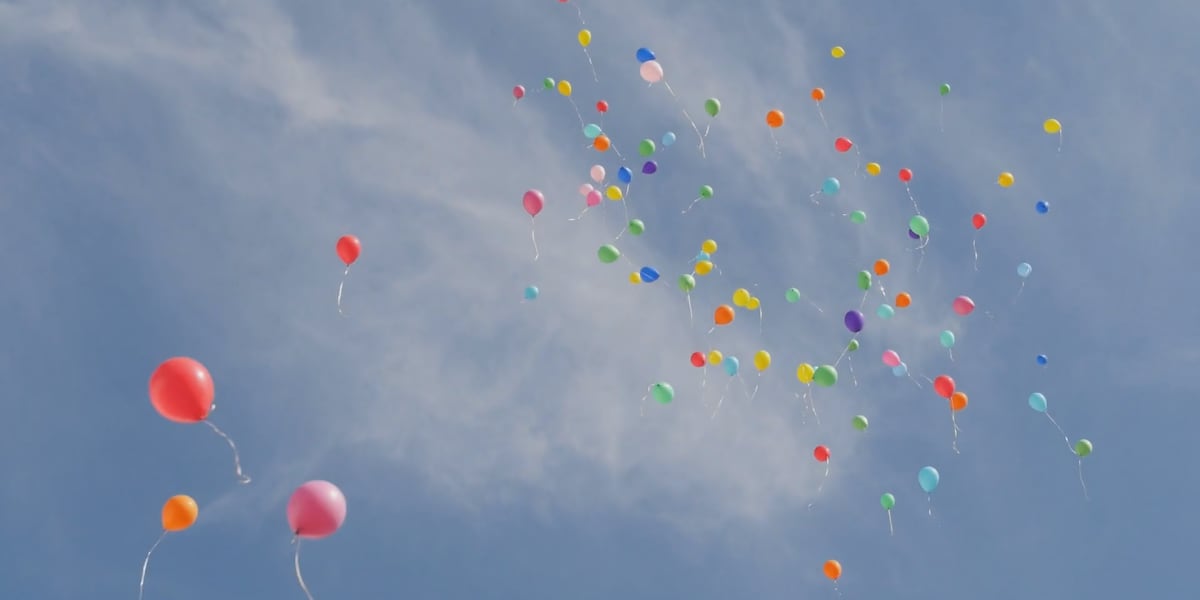Pop, Drop, and Pollute: The Balloon Release Crackdown Begins
Environment
2025-04-14 22:39:53Content

While balloon releases may seem like a heartfelt tribute to remember loved ones, wildlife experts warn that these well-intentioned gestures can have devastating consequences for the environment and its inhabitants. What appears to be a moment of emotional release quickly transforms into a dangerous threat to wildlife and ecosystems.
When balloons drift into the sky, they don't simply disappear. Instead, they eventually descend as harmful debris that can entangle or be mistaken for food by marine animals, birds, and other wildlife. Sea turtles, for instance, may confuse deflated balloons for jellyfish, leading to fatal ingestion. Seabirds and marine mammals often become trapped in balloon strings, suffering injury or death.
Environmental advocates emphasize that there are more meaningful and eco-friendly ways to honor memories. Planting trees, creating memorial gardens, making charitable donations, or participating in community service can provide lasting tributes that actually contribute positively to the world.
By understanding the environmental impact of balloon releases, we can choose compassionate alternatives that truly celebrate life and respect the delicate balance of our natural world.
Silent Killers: The Devastating Environmental Impact of Balloon Releases
In an era of commemorative gestures and emotional tributes, humanity often overlooks the unintended consequences of seemingly harmless traditions. Balloon releases, once considered a symbolic and heartfelt way to honor loved ones or celebrate special moments, have emerged as a significant environmental threat that demands immediate attention and collective action.Unveiling the Hidden Ecological Catastrophe Behind Balloon Celebrations
The Deceptive Allure of Balloon Releases
Balloon releases have long been romanticized as a poignant method of expressing grief, remembrance, or celebration. Families and communities have traditionally viewed these aerial displays as a metaphorical way of sending messages to departed loved ones or marking significant milestones. However, beneath this sentimental facade lies a stark environmental reality that wildlife experts and conservation professionals have been urgently trying to communicate. The visual spectacle of colorful balloons ascending into the sky masks a sinister ecological nightmare. Each released balloon represents a potential death sentence for countless marine and terrestrial animals, transforming what seems like a momentary tribute into a long-lasting environmental hazard.Ecological Devastation: Understanding the Lifecycle of Released Balloons
When balloons are released, they don't simply vanish into the atmosphere. These seemingly innocuous objects embark on a destructive journey that can span hundreds of miles, ultimately descending as dangerous debris in oceans, forests, and rural landscapes. Latex balloons, often marketed as "biodegradable," can take months or even years to decompose, creating extended periods of potential environmental harm. Marine ecosystems bear the brunt of this careless practice. Sea turtles, mistaking deflated balloons for jellyfish, consume these synthetic intruders, leading to fatal digestive blockages. Seabirds become entangled in balloon strings, experiencing prolonged suffering and often death. The marine food chain becomes contaminated, with microplastics from balloon fragments infiltrating ecosystems at every level.Wildlife Vulnerability: A Systemic Environmental Threat
Wildlife rehabilitation centers consistently report devastating encounters with animals injured or killed by balloon-related incidents. From marine mammals to terrestrial creatures, no species remains immune to this human-induced environmental assault. Researchers have documented heartbreaking cases of animals experiencing prolonged suffering due to balloon-related injuries. Land animals face equally grave risks. Deer, cattle, and smaller mammals can become fatally entangled in balloon strings or accidentally ingest balloon fragments while foraging. The ecological disruption extends far beyond immediate visible consequences, potentially impacting entire regional biodiversity patterns.Legal and Social Responses to Balloon Release Practices
Recognizing the environmental menace, numerous jurisdictions have implemented strict regulations against balloon releases. Municipalities, states, and even entire countries have enacted legislation imposing significant fines for such practices. These legal frameworks represent a critical step towards protecting vulnerable ecosystems and raising public awareness about the hidden dangers of seemingly innocent celebratory traditions. Conservation organizations have launched comprehensive educational campaigns, providing alternative commemoration methods that honor both emotional needs and environmental responsibilities. These initiatives emphasize creative, sustainable approaches that allow individuals to express their feelings without causing ecological harm.Sustainable Alternatives and Environmental Consciousness
Innovative alternatives to balloon releases have emerged, offering meaningful ways to commemorate special moments. Planting memorial trees, creating digital remembrance platforms, organizing community service projects, and participating in wildlife conservation efforts provide powerful, environmentally responsible alternatives. These approaches not only minimize ecological damage but also create lasting, positive impacts that truly honor the memory of loved ones or celebrate significant milestones. By shifting societal perspectives and embracing sustainable practices, communities can transform potentially destructive traditions into opportunities for genuine environmental stewardship.RELATED NEWS
Environment

Tiny Trees, Big Stories: How Bonsai Reveals Centuries of Environmental Mastery
2025-04-09 22:52:00
Environment

Coastal Controversy: Kerala's Lawmakers Clash with Centre over Offshore Drilling Proposal
2025-03-17 12:50:22






